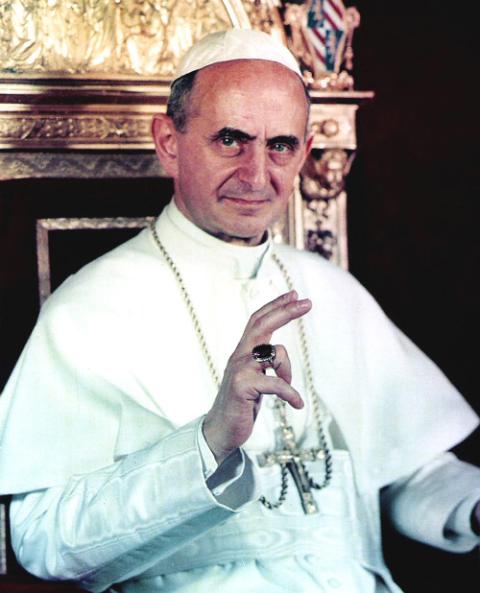
An abandoned church in Rathcormac, County Cork, Ireland. (Alison Killilea/Creative Commons)
Fifty years after it held the world's first international conference examining the rise of atheism and secularism, the Vatican is joining forces with a British research initiative to host a conference on "Cultures of Unbelief."
In late May, scholars from a range of disciplines will gather at Rome's Gregorian University to discuss the results of the research initiative, called "Understanding Unbelief," which for the past two years has been mapping the rise and nature of non-religion across the world.
Funding for the $3 million Understanding Unbelief program, which is based at the University of Kent, has come from the John Templeton Foundation.
According to the Pew Research Center, the number of "nones" — those who describe themselves as atheist, agnostic or of no particular religion — will reach 1.2 billion worldwide by 2060. In the United States, 23 percent of the population currently claims no religious affiliation.
Young people are particularly likely to identify as nones. Last year a study by Understanding Belief researcher Stephen Bullivant revealed that 70 percent of 18- to 29-year-olds in the U.K. identify as having "no religion."
Among the research projects being undertaken is a study of unbelief in countries where the majority population is made up of nonbelievers. These include South Korea, Vietnam and Japan, a challenge to the widespread assumption that unbelief is a solely Western phenomenon. Another group is examining the motivations, experiences and problems faced by nonbelievers in religious societies such as Egypt.

Pope Paul VI in 1963 (Vatican City official photo/Creative Commons)
Other projects are looking at non-religious childhoods in the U.K., the persistence of magical thinking in unbelieving societies and the ways in which mindfulness meditation might be seen to constitute a secular religion.
The previous conference, "The Culture of Unbelief," held in 1969, came in the wake of the new spirit of openness brought about by the Second Vatican Council, which had closed only four years earlier. The Curia initiated a number of dialogues with other Christians and with Jews and those of other faiths. It also set up a pontifical secretariat for nonbelievers (Secretariatus pro Non-Credentibus) to dialogue with nonbelievers.
The conference was convened to address what then-Pope Paul VI saw as "among the most serious matters of our time" — namely, atheism. Cardinal Franz Koenig, then the archbishop of Vienna and the pope's pick to be head of the secretariat, said it represented a "new approach in the way of proceeding of the Catholic Church, less preoccupied with defending her position than with meeting the very grave problems of the modern world."
The problem was that few in official Catholic circles knew any nonbelievers. The cardinal asked the eminent American sociologist Peter Berger, who died in 2017, who he should invite to the conference.
"The Secretariatus pro Non-Credentibus was eager to have this dialogue, but it did not know with whom to have it," Berger wrote in his memoir. "Unlike the other interlocutors, the non-credenti cannot be found in the phone book."
Advertisement
There was huge media interest, and some 3,000 people attended the conference to hear the world's leading sociologists, historians and theologians give their papers. It ended with a papal audience. Among the prominent academics gathered were Harvard University's Harvey Cox, Martin Marty from the University of Chicago's Divinity school and British sociologist David Martin.
"Harvey Cox was quite the star," Martin told Religion News Service. "He was overwhelmed to learn that the pope had read his book," the seminal study of unbelief, The Secular City. Martin recalls with amusement how several of the freethinking secular academics present were star struck at meeting Paul VI.
But, according to Berger, the conference failed to make a lasting impact, despite the fact that the dialogues between atheists and cardinals continued into the pontificate of Benedict XVI, when the "Courtyard of the Gentiles," a program set up by Benedict to promote contact with the unchurched world, hosted a famous encounter between Cardinal Mario Martini and the Italian philosopher and writer Umberto Eco.

Netley Abbey, a ruined Cistercian monastery, in the south of England. (Creative Commons)
There are currently no definite plans for Pope Francis to address this summer's conference, but organizers say the possibility remains open. What's important, they say, is to build a dialogue and collaboration between believers and unbelievers in order to gain a greater understanding of the others' metaphysical existential and moral beliefs.
"The growth of different forms of non-religion has been a significant development in many societies across the world in recent decades," says Gordon Lynch, Michael Ramsey professor of modern theology at the University of Kent.
"This conference," he added, "drawing together findings from the most substantial international programs of research in this field, promises to be a genuinely landmark event in taking forward both our understanding of the varieties of non-religion and the social implications of these."



